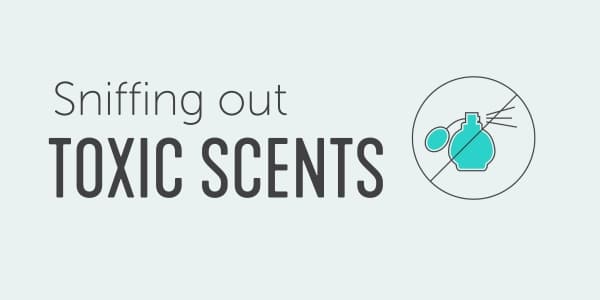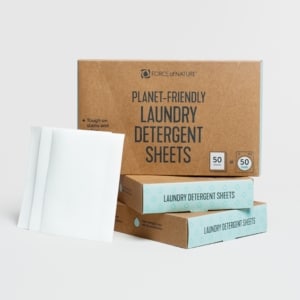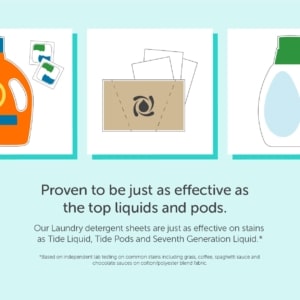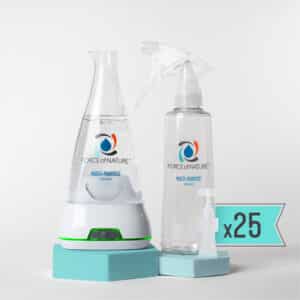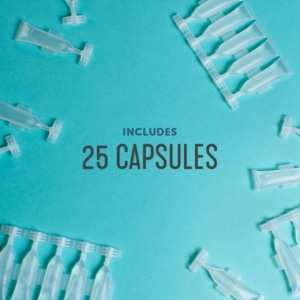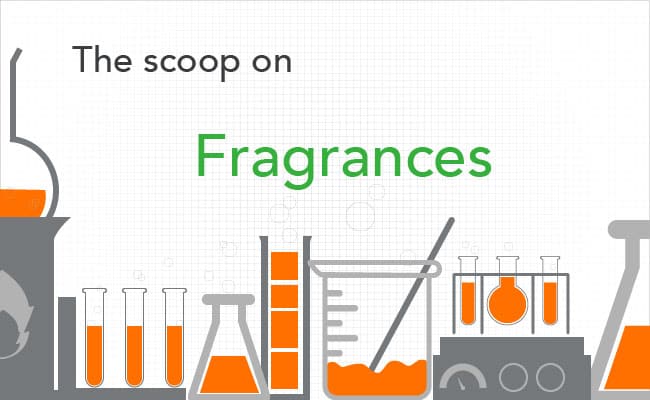
Fragranced products can certainly make us and the things in our homes smell delightful. It’s hard to deny that a freshly bathed baby, warm sheets right out of the dryer, and sparkling clean dishes all smell really nice. Added scents and fragrances are great for making personal care products, cleaning sprays, and other products seem more effective & healthier.
If you’re like most people, you probably assume that fragrances are 100% safe, and that’s exactly what manufacturers want you to think. To arm parents with the information they need to make safe product choices, we’ve compiled the top 7 things manufacturers don’t want you to know about fragrance safety and toxic fragrances.
8 Things to Know About the Safety of Chemicals in Fragrance
- Fragrances are linked to a staggering number of health risks. Across multiple research studies, synthetic chemicals used to make fragrances are classified as allergens, hormone disruptors, asthma triggers, neurotoxins & carcinogens. The punchline: fragrances are highly toxic and can cause allergic reactions.
- Fragrances commonly contain phthalates, which are chemicals that help the scents last longer. Studies have shown that more than 75% of products with fragrances contain these endocrine disruptors. They can act like hormones in the human body, which can cause a host of health problems. Health risks for phthalates are startling and include cancer, human reproductive and developmental toxicity, endocrine disruption, birth defects & respiratory problems, genital malformations and undescended testes in baby boys, and lower sperm counts in men. In addition, a recent large study across over 5,000 people linked phthalates to premature deaths – up to 107.000 annually – among adults aged 55-64. These toxic villains are very hard to avoid because manufacturers are not required to list them on ingredient labels.
- Fragrance chemicals, like other toxic chemicals, can pass from the skin and into the blood.
- Manufacturers are not required to list their fragrance ingredients on product labels. Often only one word, “fragrance”, is used on the label and can hide a cocktail of more than 100 toxic ingredients. This is because fragrances are considered to be “trade secrets”.
- The fragrance industry regulates itself. That means safety testing does not have to be confirmed by regulators before products are sold to consumers.
- So-called “natural fragrances” can be just as toxic as synthetic fragrances.
- Fragrance chemicals pose environmental risks as well. The chemical vapors found in fragrances, known as volatile organic compounds, have been linked to ozone pollution and the creation of fine particulates, as indicated by a study.
- A good smell doesn’t always indicate it’s clean. Whether it’s in a cleaning product, deodorant, shampoo, or laundry detergent, fragrance chemicals aren’t actually making your product perform better – they are just giving you that perception. We’ve been trained to think that clean has a smell, when in truth that’s not the case.
Net, fragrances are linked to so many profound health risks that avoiding them is probably the #1 change you can make to reduce your family’s exposure to toxic chemicals.
How to Avoid Harmful Fragrances
To avoid fragrances, the Environmental Working Group advises that consumers read the word “fragrance” or “parfum” and translate it to mean “hidden chemicals”. We believe the safest choice is to always choose fragrance-free products. But a couple of key tips you should keep in mind:
- Don’t be fooled by products labeled with “natural fragrance,” because there is no standard criteria for what these words mean. These can be just as unsafe as fragrances not described this way, so skip these products too.
- If you see the words “fragrance-free” or “unscented”, your Spidey senses should kick into action. You also have to check the ingredient list, because sometimes manufacturers use masking fragrances to cover the chemical smell of their products.
Learn More
For more tips on how to avoid toxic chemicals in the products you commonly buy, check out these toxic chemical-free product guides as well as this toxic chemical glossary of the top toxic villains to avoid across all types of products.
Cleaning products are some of the most notorious when it comes to toxic fragrances, so jumpstart your switch to a less toxic lifestyle by checking out Force of Nature. It has zero added fragrances, dyes, preservatives, allergens or irritants, yet cleans & disinfects just as effectively as bleach.
You might be curious to learn more about Force of Nature’s technology called electrolyzed water or about how Force of Nature kills viruses & bacteria. And if you want to dig in even more, we’ve also got the scoop on how Force of Nature is safe to use on virtually any surface in your home, and about how Force of Nature actually works.
